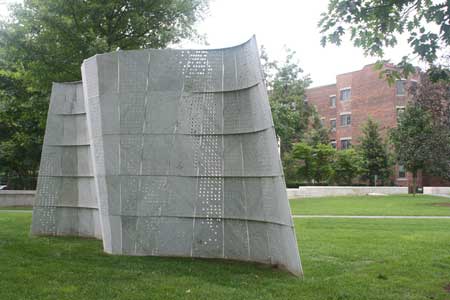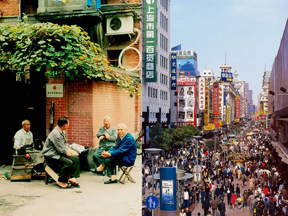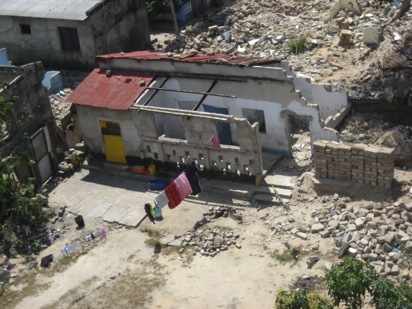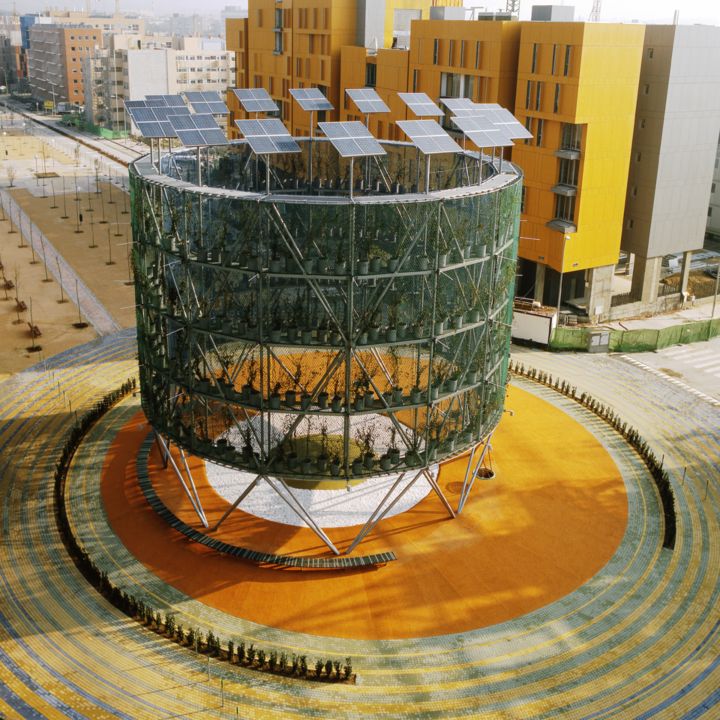Surfacing Stone
The research explores the design and analysis of a thin marble shell that incorporates the latest developments in fabrication technology and computational analysis. Natural stone, one of the oldest and most traditional building materials, is used in innovative ways by manipulating it with a 6-axis robotic waterjet.
The research studies techniques for the robotic perforation and surfacing of natural stone, with a particular focus on marble. Small tests panels explored how transparency and translucency of stone can be generated through robotic waterjet cutting. A prototypical stone shell was designed to further explore the design potential encountered in the small test pieces. The shell is post-tensioned and stiffened with metal stiffeners. Finite-element analysis (FEA) served as a primary technique to conduct a detailed structural analysis of the shell.
Principal Investigator: Professor Monica Ponce de Leon; Project Management (Design Phase): Wes McGee; Fabrication Team: Jessica Lissagor, Trevor Patt, Damon Sidel, Heather Boesch, Mathieu Blanchard, Cameron Willard; Structural Peer Review: Souza, True & Partners, Watertown, MA
2007-2009
Sponsored by the International Masonry Institute
China Urban Research Fund Project
At this juncture, China appears to be at a mid-point in its present period of urbanization, with on the order of another 350 million inhabitants likely to become urbanized during the next 25 years or by mid-century. To date, since the opening of China to the outside world in 1978 and its transition into a fuller market economy, modernization and urbanization has been both rapid and considerable in overall scale. Generally for many in China, their physical well-being and opportunities for continued prosperity have been improved, often dramatically. For others this has not so far been the case. Nevertheless, many issues associated with urban development remain unresolved or inadequately addressed. Among them, the likely scales and spatial distributions of future development are not well understood, nor are more specific patterns of urban settlement and particularly those in and around the urban-rural interface. Urban management is undergoing substantial review and potential realignment in conjunction with broad shifts in policy, such as under the 11th Five-year Plan, and with regard to emerging regulation and changes in local practices. Urban environmental sustainability remains perilously unresolved, with mounting resource consumption, often egregious lags in environmental remediation, and a paucity of demonstrably viable initiatives and practices. Adequate housing and related service provision, especially among lower-income groups, as elsewhere in rapidly developing and relatively poor circumstances, also remains an important issue.
Clearly, resolution of any one of these issues lies well beyond this or any other singular research effort. Rather, here the aim will be to focus on a four-part topical agenda of urban formation, urban management, urban-environmental sustainability and urban housing, for the purposes of: 1) gathering pertinent background information about phenomena under consideration, 2) highlighting what appear to be specific issues and trends, 3) identifying and describing reasonable practices, and 4) generally serving as a source of well-qualified information about China’s urbanization for use in educational and other research exercises.
Sponsored by the East West Cultural Development Center, Singapore
Social Movements, Eviction and Involuntary Resettlement
Social Movements, Eviction and Involuntary Resettlement: The Dynamics of Grassroots Mobilization: Social Movements, Eviction and Involuntary Resettlement
As multilateral organizations and aid agencies increasingly advocate bottom-up and community-led approaches to development, it is critical to understand the dynamics and consequences of grassroots mobilization. This project addresses two related questions that strike at the heart of our understanding of collective action, community mobilization, and urban politics in the developing world. The first is, what motivates social movement participation by the urban poor? The second is, how does social movement participation impact the ability of individuals to cope with key development challenges? These two questions are explored through a detailed study of community mobilization around eviction and involuntary resettlement in Dar Es Salaam, Tanzania.
2007-Present
Publications
Hooper, M. and J. Cadstedt. 2014. “Moving Beyond ‘Community’ Participation: Perceptions of Renting and the Dynamics of Participation Around Urban Development in Dar es Salaam, Tanzania .” International Planning Studies 19(1): 25-44.
Hooper, M. and L. Ortolano. 2012. “Confronting Urban Displacement: Social Movement Participation and Post-Eviction Resettlement Success in Dar es Salaam, Tanzania .” Journal of Planning Education and Research 32(3): 278-288.
Hooper, M. and L. Ortolano. 2012. “Motivations for Slum Dweller Social Movement Participation: A Study of Mobilization in Kurasini, Dar es Salaam .” Environment and Urbanization 24(1): 99-114.
Hooper, M. 2012. “Lessons from Mobilization Around Slum Evictions in Tanzania .” Forced Migration Review 41: 47.
Hooper, M. 2012. “The Complexity of Participation: Learning from Slum Dweller Mobilization in Dar es Salaam .” The Global Urbanist, Dec. 11, 2012.
Hooper, M. 2012. “Post-Disaster Resettlement: More than a Question of Shelter .” InM. Mostafavi and P. Christensen (Eds.). Instigations: Engaging Architecture, Landscape and the City. Zurich: Lars Müller Publishers.
Sponsored by the Social Sciences and Humanities Research Council (Canada), American Planning Association (International Division)
urban revitalization ECOBOULEVARD
The Eco-boulevard in Vallecas can be defined as an urban recycling operation consisting of the following actions: insertion of an air tree-social dynamizer over an existing urbanization area, densification of existing alignment trees and reduction and asymmetric arrangement of wheeled traffic circulation. Superficial interventions reconfiguring the existing urbanization (perforations, fillings, paint, etc.) that defaces the executed kerb development.
There are two main objectives: one of a social nature, aimed to generate activity, and one of an environmental nature, the bioclimatic adaptation of an outdoor space, achieved with a system of passive air conditioning based on chilling by evapotranspiration.
This system, commonly used in the green house industry, is capable of lowering temperature by around 10º C, depending on humidity conditions and temperature. The system goes into action when a temperature sensor detects temperatures above 27ºC in its surroundings. It is particularly efficient with high temperatures and low relative humidity (typical conditions in Madrid during the summer).
The Air Trees are objects of an exportable nature, so they may be re-installed in similar locations or in other types of situations requiring an urban activity or reactivation.
Fore more information, visit ECOBOULEVARD .



